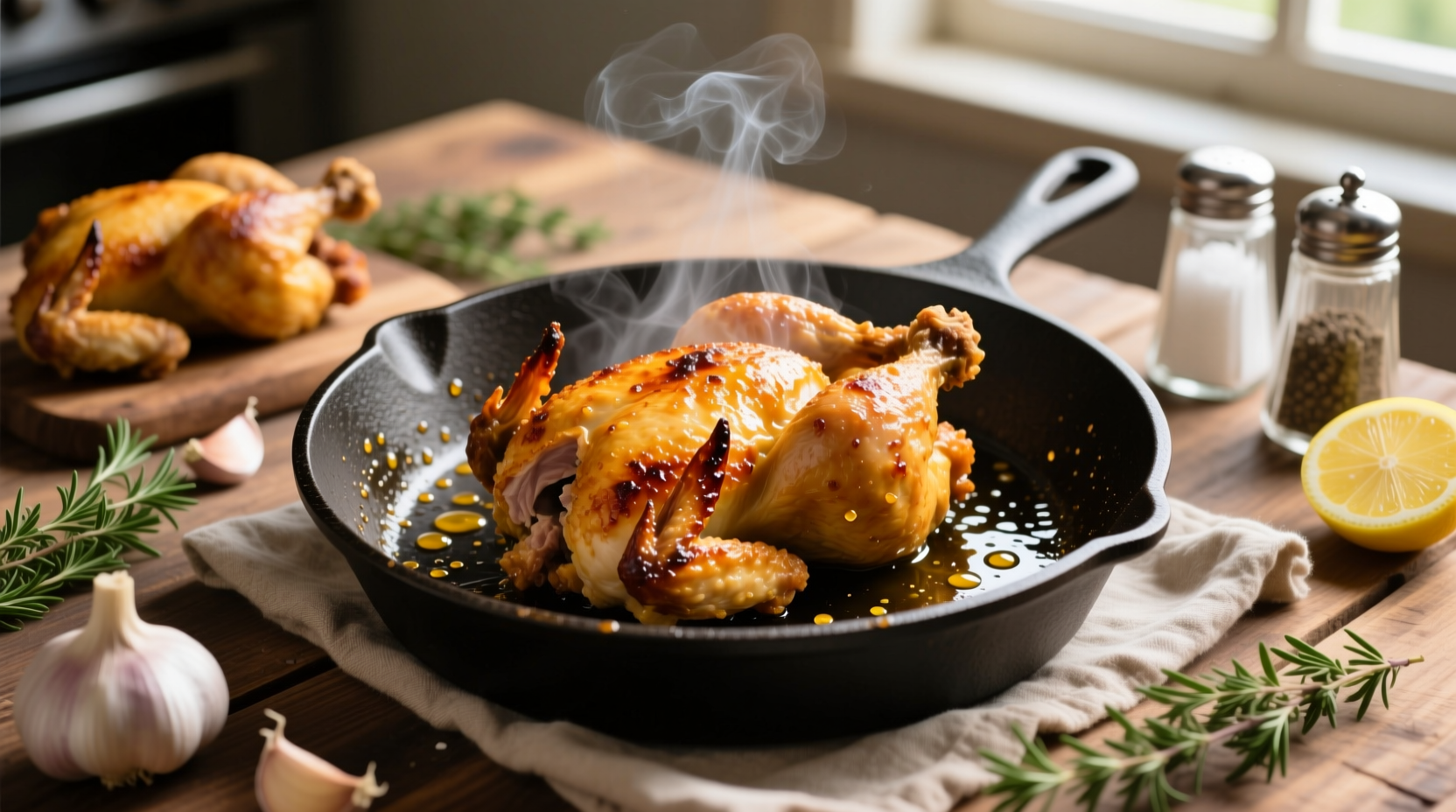Mastering stovetop chicken cooking transforms weeknight dinners with minimal equipment and maximum flavor. This comprehensive guide reveals professional techniques for achieving golden-brown, restaurant-quality chicken every time you fire up your skillet. Whether you're a beginner cook or looking to refine your skills, you'll learn precise timing, temperature control, and seasoning strategies that prevent dry, rubbery results.
Essential Equipment Checklist
Before starting, gather these kitchen essentials for optimal pan-fried chicken success. The right tools make all the difference between satisfactory and spectacular results.
| Equipment | Why It Matters | Pro Tip |
|---|---|---|
| Heavy-bottomed skillet | Ensures even heat distribution | Cast iron or stainless steel works best |
| Instant-read thermometer | Guarantees perfect doneness | Calibrate before first use |
| Thin metal spatula | Prevents sticking and tearing | Slide under chicken at 45° angle |
| Meat mallet or rolling pin | Creates even thickness | Pound to ¾-inch uniform thickness |
Chicken Selection and Preparation
Choosing the right cut and preparing properly sets the foundation for success. Boneless, skinless chicken breasts offer quick cooking but require careful attention to avoid dryness, while thighs provide more forgiveness with their higher fat content.
According to USDA Food Safety and Inspection Service guidelines, raw poultry should be stored at 40°F or below and used within 1-2 days of purchase. Always handle raw chicken with care to prevent cross-contamination - use separate cutting boards and wash hands thoroughly after contact.
For even cooking, pound thicker portions to uniform ¾-inch thickness using plastic wrap to prevent mess. Pat chicken completely dry with paper towels - this critical step creates the perfect surface for browning through the Maillard reaction, the chemical process that develops complex flavors when proteins and sugars meet high heat.
Step-by-Step Cooking Process
Follow these precise steps for consistently excellent results. The timing varies slightly based on your stove's heat output and chicken thickness, so always verify with a thermometer.
- Preheat your skillet over medium-high heat for 3-5 minutes until a drop of water sizzles immediately
- Add 1-2 tablespoons oil with high smoke point (avocado, canola, or grapeseed)
- Season chicken generously with salt and pepper just before cooking
- Place chicken in hot skillet without crowding - cook in batches if necessary
- Cook undisturbed for 5-7 minutes until golden brown and releases easily
- Flip and cook another 5-7 minutes until internal temperature reaches 165°F (74°C)
- Rest for 5 minutes before slicing to retain juices

Troubleshooting Common Issues
Even experienced cooks encounter challenges. Here's how to solve frequent problems:
- Sticking chicken: Ensure proper preheating and avoid moving too soon. If sticking occurs, wait 30 seconds - it will release naturally when properly seared.
- Burning oil: Reduce heat immediately. Different oils have varying smoke points - avocado oil (520°F) handles higher heat than olive oil (375°F).
- Dry chicken: Overcooking is the primary culprit. Use a thermometer and remove at 160°F - residual heat will carry it to 165°F during resting.
- Uneven browning: Check for hot spots in your pan and rotate chicken halfway through cooking each side.
Flavor Variations and Serving Suggestions
Elevate your basic pan-fried chicken with these professional finishing techniques. Add one tablespoon of butter, garlic, and fresh herbs during the last two minutes of cooking for a restaurant-style pan sauce. Simply tilt the skillet and spoon the melted butter continuously over the chicken.
For crispy-skinned chicken thighs, start skin-side down in a cold pan to render fat gradually, then increase heat for optimal crispness. The American Institute of Baking confirms that gradual fat rendering at lower temperatures produces superior texture compared to high-heat methods.
Serve immediately with lemon wedges and fresh herbs. Pair with roasted vegetables or a simple salad for a complete meal. Leftovers make excellent additions to salads, sandwiches, or grain bowls the next day.











 浙公网安备
33010002000092号
浙公网安备
33010002000092号 浙B2-20120091-4
浙B2-20120091-4